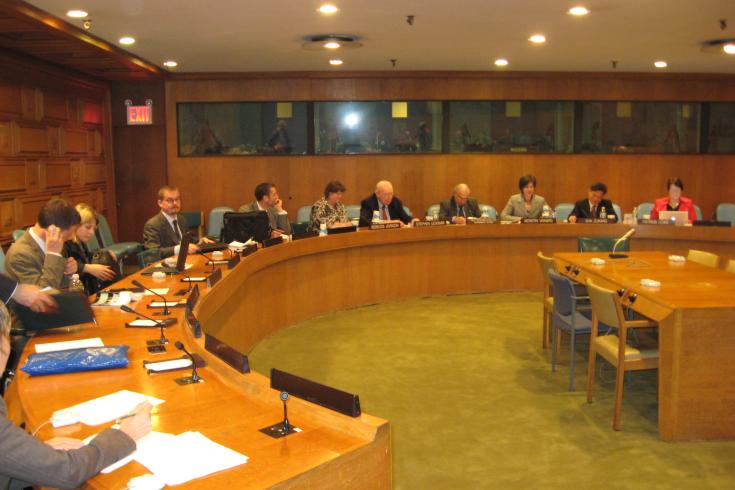CTBT: panacea for the Nuclear Non-Proliferation Treaty
Broad Consensus for the CTBT
The CTBT's entry into force was called for by over 30 countries or groups in the general debate alone (see highlight on 6 May 2009). Twenty of the 32 working papers introduced to the meeting contained substantive positive language on the Treaty. These included papers by the European Union and the 'Vienna Group of Ten', which focussed exclusively on the Treaty, as well as by Australia, Canada, Iran, Japan, the United States and New Zealand or groups such as the New Agenda Coalition, the Group of Non-Aligned States, and the State Parties of Treaty of Tlatelolco. P5 Statement supportive of the CTBT
For the first time in nearly a decade, the P5 (China, France, Russia, the United Kingdom and the United States) issued a joint press statement on non-proliferation supportive of the CTBT. Also, the head of the Preparatory Commission for the Comprehensive Nuclear-Test-Ban Treaty Organization (CTBTO) was welcomed by all NPT Parties to officially address the Conference.
To strengthen the NPT regime, it is essential that the Comprehensive Nuclear-Test-Ban Treaty enters into force without further delay.
180 States have signed, 148 ratified the CTBT. Nine specific States are missing for entry into force. Click on image for interactive map.
It bridges the divide between the different emphases placed on each of these pillars by the NPT’s different parties. It signals commitment to disarmament. It strengthens non-proliferation. It facilitates peaceful uses.
New Book on the CTBT presented
Other panelists included Mr. Sha Zukang, U.N. Under-Secretary-General for Economic and Social Affairs, who expressed his personal view that China should ratify the CTBT. Ms. Patricia Lewis, deputy director of the James Martin Center for Nonproliferation Studies, spoke about the Treaty's situation after ratification by the U.S. and China and addressed the question of its provisional entry into force. Former U.S. Ambassador Stephen Ledogar spoke of how best to address the challenge of U.S. ratification.
Click to open PDF version of Rebecca Johnson's new book on the CTBT.
At a time when U.S. ratification of the CTBT is highly topical, Dr. Johnson’s description of how the actions of both Democratic and Republican U.S. presidents paved the way for the creation of the CTBT clearly demonstrates that this is not an issue restricted to a single political party or ideology. Her book also draws important lessons from the CTBT's negotiations that can be applied to future arms control treaties.

The book was presented in a panel discussion hosted by the United Nations Institute for Disarmament Research (UNIDIR) on 13 May 2009.
18 May 2009